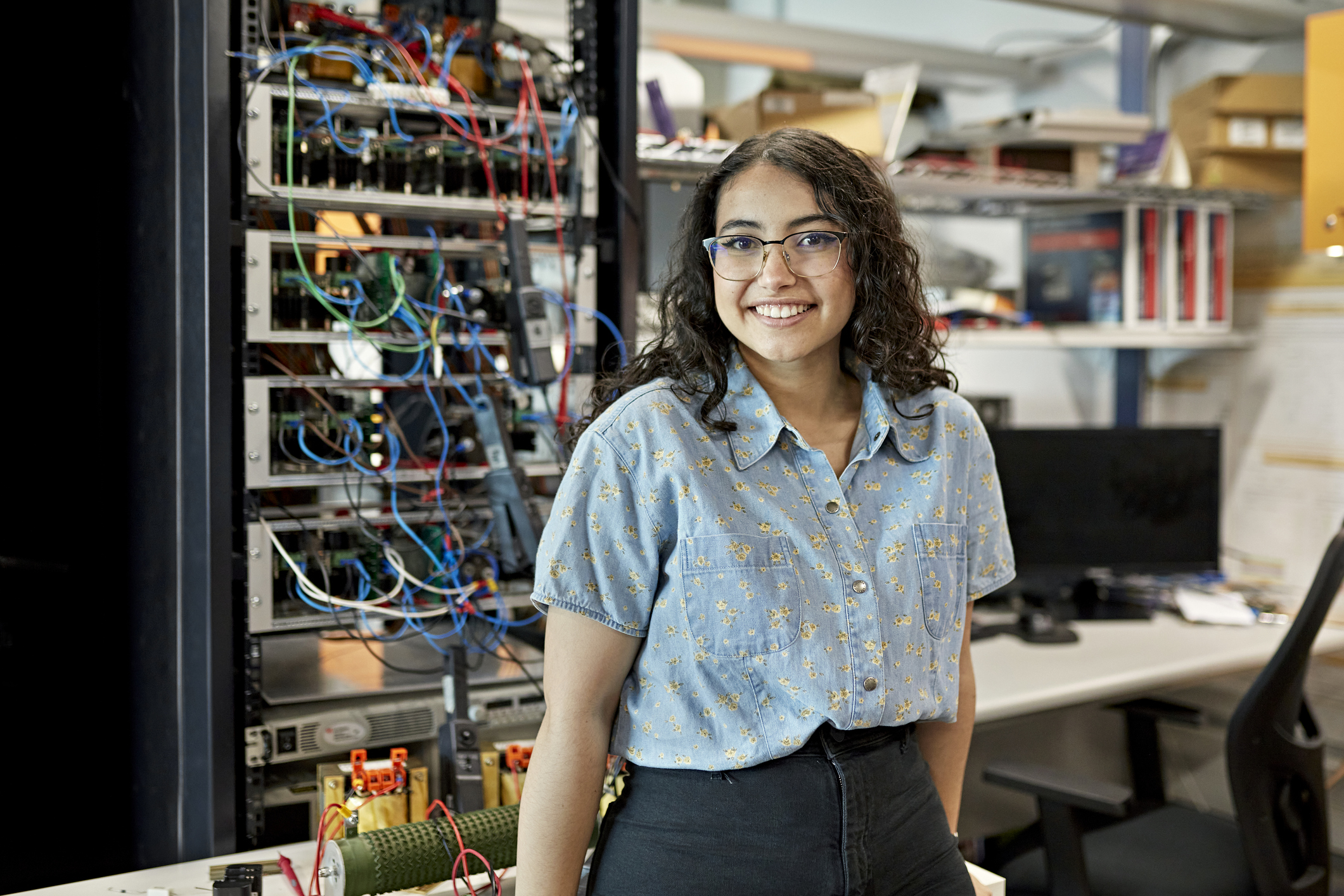Bachelor’s in Radiologic Technology Program Guide
Key Takeaways
- A radiology degree can lead to careers in sonography, cardiovascular technology, and MRI technology.
- Jobs for radiologic and MRI technologists are projected to grow by 6% from 2023-2033 — about 50% faster than average.
- When looking at degree options, consider programs accredited by the Joint Review Committee on Education in Radiologic Technology.
Radiologic technologists work with complex medical equipment, such as X-ray machines, ultrasound machines, and magnetic resonance imaging (MRI) scanners, to diagnose and track diseases and injuries.
One way to become a radiologic technologist is to get a bachelor’s degree in radiologic technology. In this program, you’ll study topics like medical imaging, anatomy, and radiation protection. After you graduate, you can work with diverse populations in various healthcare settings.
Keep reading to learn more about what a bachelor’s in radiologic technology entails and whether this degree is right for you.
What Is a Bachelor’s Degree in Radiologic Technology?
A radiologic technology degree program focuses on advanced imaging techniques and teaches you how to evaluate the images you create. You can specialize in X-rays, MRIs, CT scans, and other medical imaging techniques.
You’ll also study anatomy and physiology, patient care, advanced imaging technology, and radiation safety.
Along with performing research, you’ll likely complete one or more clinical internships to gain healthcare experience. Hands-on training is a key part of most bachelor’s in radiologic technology programs since the role requires direct patient contact.
In both in-person and hybrid programs, you can safely simulate radiographic positions on classmates without risking radiation exposure.
Bachelor’s in Radiologic Technology Courses
The best bachelor’s in radiologic programs prepare you to work in all areas of medical imaging. You’ll learn how to use complex medical equipment to diagnose and monitor diseases and other health conditions.
You can choose from several concentrations, such as computed tomography, radiation therapy, magnetic resonance imaging, and diagnostic medical sonography.
Common courses you might take for a bachelor’s degree in radiologic technology include:
- Advanced imaging: Teaches you to identify illnesses in the brain, heart, and other areas of the human body.
- Anatomy and physiology: Covers the complex structure of the human body and how the body functions, including cell function and heredity.
- Technical imaging: Provides basic principles of medical imaging, including X-ray equipment, physics, patient care, and radiography.
- Radiation protection: Teaches radiation science, how to detect and measure radiation, and how to protect patients against radiation hazards.
- Advanced imaging techniques: Covers diffusion tensor imaging (DTI), functional MRI (fMRI), and other advanced imaging techniques.
How to Get a Bachelor’s Degree in Radiologic Technology
Curious about how to earn a bachelor’s degree in radiologic technology? Learn how long these programs take and how to apply.
How Long Does It Take to Get a Radiologic Technology Degree?
Most students spend four years earning their radiologic technology degree. That said, some schools may offer accelerated and degree-completion options in radiologic technology, reducing the time you spend on your degree.
For example, the accelerated radiographic science program at Massachusetts College of Pharmacy and Health Sciences takes 32 months to complete.
In comparison, The Ohio State University’s online AS-to-BS completion degree in radiologic sciences and therapy takes two years to complete, as it’s geared toward certified radiology professionals who already have an associate degree.
UC Blue Ash College offers an accelerated three-year bachelor’s in radiologic imaging technology program.
How to Apply for a Bachelor’s in Radiologic Technology Program
Bachelor’s programs in radiologic technology typically require a GED or high school diploma. Biology, anatomy and physiology, medical terminology, and physics are common prerequisites.
Many bachelor’s in radiologic technology programs require a minimum GPA of 3.0, like the University of Missouri. Some programs, however, such as Ohio State’s, accept a 2.5 GPA. Kent State Online requires a minimum 2.75 GPA.
You’ll need to provide transcripts to show you’ve completed your general educational requirements and to emphasize your science and math skills.
Admissions materials typically consist of:
Official high school transcripts or GED scores
SAT or ACT scores
Personal statement
Letters of recommendation
Resume
How Much Does a Bachelor’s in Radiologic Technology Cost?
According to the National Center for Education Statistics, the average cost of tuition at a four-year in-state university was $9,750 in 2022-2023. For private school students, the average tuition cost was $35,248.
While radiologic technology degree programs can charge wildly different rates, tuition is generally cheapest if you attend an in-state school.
For example, the University of Missouri’s online program charges $648 per credit, with an estimated program cost of $19,437. Plus, there are a number of additional fees, such as fees for a nationwide background check, immunizations, and a drug panel.
Approximate tuition costs for Kent State Online’s radiologic imaging sciences technology program run at $16,100-$24,100 for Ohio residents and $24,300-$24,700 for nonresidents.
Illinois’s College of DuPage charges an estimated $13,879 for its radiography bachelor’s program.
What Can I Do With a Bachelor’s Degree in Radiologic Technology?
There are a number of high-paying jobs for graduates of bachelor’s in radiologic technology programs. Take a look below to learn what opportunities await you.
Radiologic Technology Degree Jobs
Most graduates of bachelor’s in radiologic technology programs work as radiologic and MRI technologists. Grads often find work in healthcare facilities, such as hospitals and doctor’s offices.
That said, there are a range of specializations within radiologic technology. Some employers require a bachelor’s degree for more advanced roles such as radiation therapy and nuclear medicine.
The Bureau of Labor Statistics (BLS) projects that jobs for radiologic and MRI technologists will grow 6% between 2023 and 2033, which is faster than average.
You’ll need at least an associate degree to work as a radiologic or MRI technologist. Still, earning a bachelor’s may qualify you for higher pay and management roles.
Most states also require you to be certified or licensed. You can get certified by the American Registry of Radiologic Technologists (ARRT) and/or the American Registry of Magnetic Resonance Imaging Technologists (ARMRIT).
How Much Money Can I Make With a Bachelor’s in Radiologic Technology?
Radiologic and MRI technologists earned a median annual salary of $76,020 in 2023, according to the BLS. That’s $36.55 per hour.
Your exact pay will depend on your location, education level, and years of experience, among other factors.
MRI techs tend to earn more due to ther specialized training and the growing need for healthcare professionals in this field. MRI scans are used for an array of diagnostic procedures. Plus, these professionals need additional certifications beyond the requirements for radiologic technologists.
What to Consider Before Choosing a Bachelor’s in Radiologic Technology Program
Before you choose a bachelor’s in radiologic technology program, it’s important to understand what you’ll commit to. Consider the cost of the program, its length and format, and whether it holds accreditation.
Cost
Higher education can be expensive, so it’s important to consider the cost of your bachelor’s in radiologic technology program.
Take time to compare tuition costs for potential programs. You should also apply for scholarships and grants and fill out the Free Application for Federal Student Aid (FAFSA).
Comparing the cost of your desired program with the amount of money you plan or hope to earn after graduation can give you an idea of the return on investment of your degree.
Program Length
Bachelor’s programs in radiologic technology usually take four years, but your program may be shorter or longer depending on your student status and whether your program accepts prior college credit.
If a radiologic technology degree program accepts college credit or offers credit for work experience, you could save time on your bachelor’s, earning it in two years or less.
Be sure to consider the time commitment and potential hurdles. The longer your program, the longer you put off your entry into the workforce. Plus, you might end up spending more on tuition and other fees in the long run.
Accreditation
Accreditation ensures that schools meet quality education standards, making them credible learning institutions.
Note the difference between institutional and programmatic accreditation. Whereas instructional accreditation accredits an entire school, programmatic accreditation focuses on evaluating specific academic programs.
The Joint Review Committee on Education in Radiologic Technology (JRCERT) is the primary accreditor of radiography programs in the United States. You should only apply to JRCERT-accredited bachelor’s in radiologic technology programs.
You can check schools’ accreditation statuses on their websites or on the JRCERT directory.
Program Format
Your radiologic technology degree program’s format can impact your experience positively or negatively depending on whether your program matches your needs.
An in-person program might suit you if you want to directly interact with faculty and facilities.
Online programs, meanwhile, tend to offer more flexibility through asynchronous coursework. In that sense, an online program may be better for you if you need to balance other commitments, such as career or family obligations.
Hybrid programs combine online and in-person learning, offering flexibility and the opportunity to gain hands-on experience.
Discover the Best Radiologic Technology Programs
Explore More College Resources

5 Healthcare Jobs That Don’t Require Med School
If you want job security, healthcare is where it’s at. No need to slog through years of med school to get there, either. Explore five great healthcare jobs you didn’t know existed.

by Meg Embry
Updated September 22, 2023



